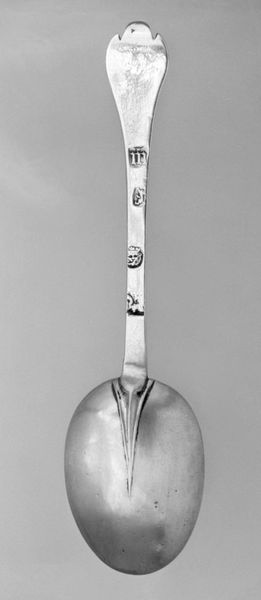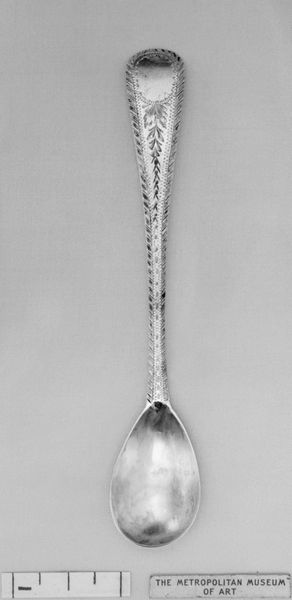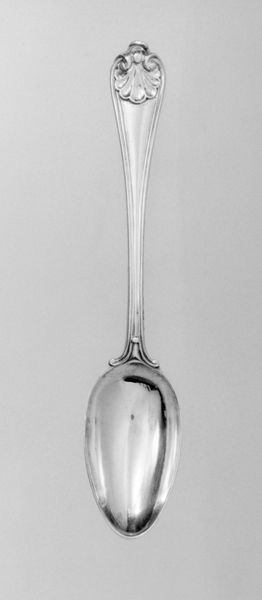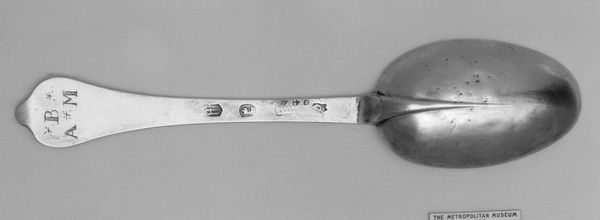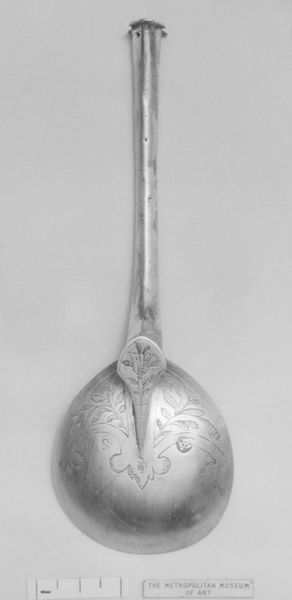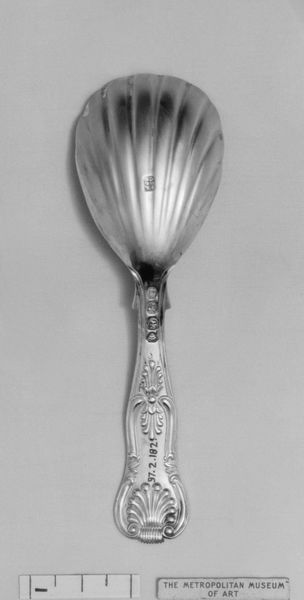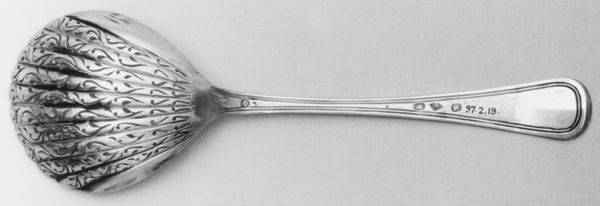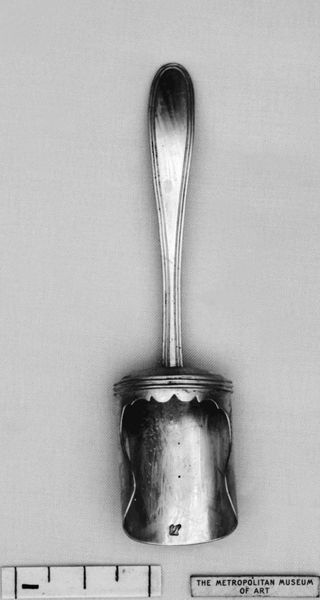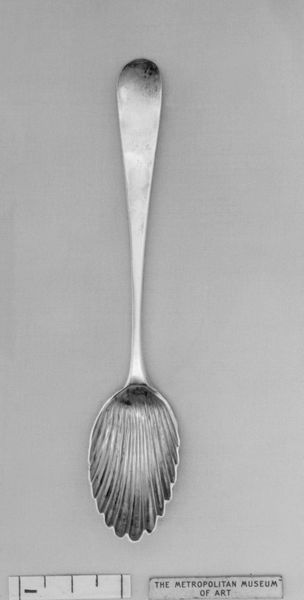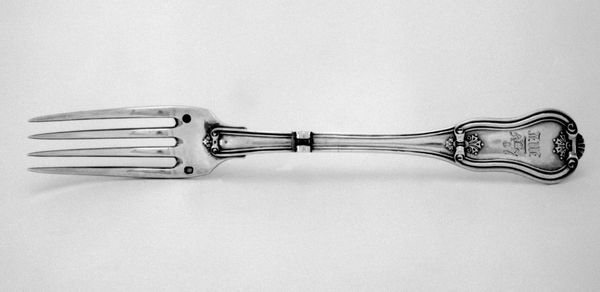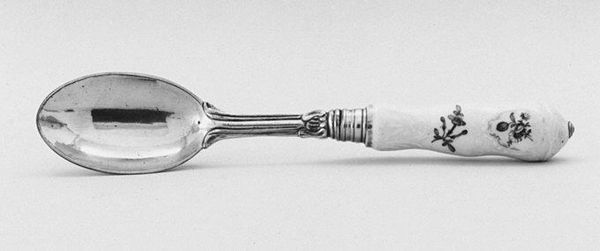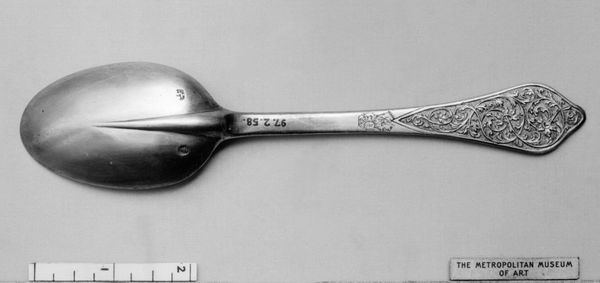
silver, metal, metalwork-silver, sculpture
#
silver
#
metal
#
metalwork-silver
#
sculpture
#
decorative-art
Dimensions: 7 5/8 × 1 1/2 in. (19.4 × 3.8 cm)
Copyright: Public Domain
This silver spoon was crafted by Henry Greene in the early 1700s. Though it appears simple, its gleaming surface reflects a world of skilled labor. Silversmiths like Greene were highly trained, mastering techniques such as hammering, annealing, and polishing to transform raw metal into refined objects. Notice the engraved initials "ES" and the hallmarks—these marks weren’t just decorative; they guaranteed the silver’s quality and the maker’s reputation. The spoon’s form, with its elegant, elongated bowl, speaks to the increasing sophistication of dining culture at the time. Yet, beyond its aesthetic appeal, this spoon represents the burgeoning consumerism of the 18th century. Silverware was a symbol of status, reflecting not only wealth, but also participation in a complex network of trade and craftsmanship. Next time you see a piece of silverware, remember that it’s more than just a utensil; it's a testament to human ingenuity and the social forces that shape our material world.
Comments
No comments
Be the first to comment and join the conversation on the ultimate creative platform.
